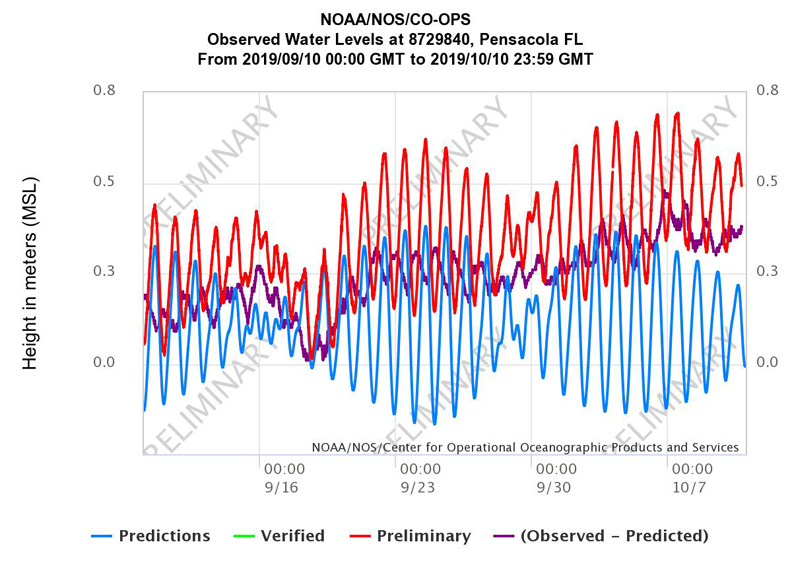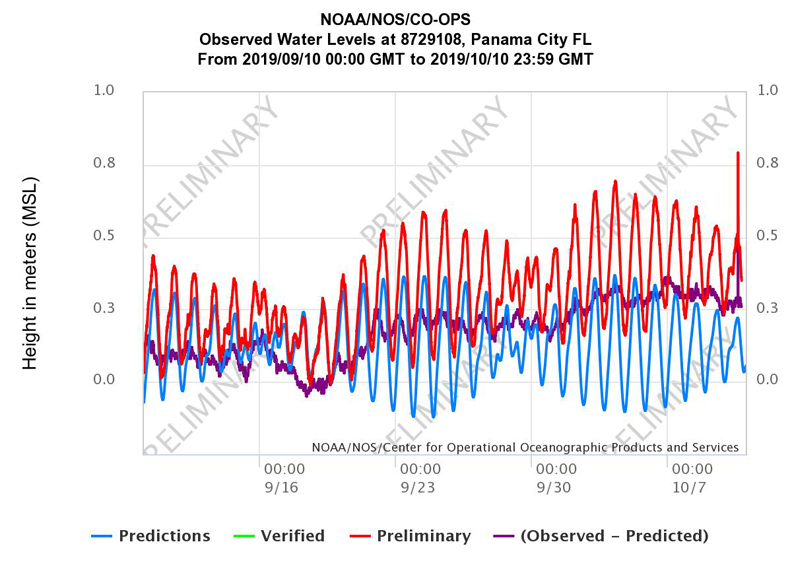Oct. 10, 2019 – For more than a week, many folks have been wondering why the water levels are so high in the Choctawhatchee Bay and surrounding estuaries. Walton Outdoors reached out to area scientists from Choctawhatchee Basin Alliance and Florida Sea Grant to seek answers. With the Choctawhatchee River water levels near historic low, inquiring minds wonder what is occurring.
According to the National Oceanic and Atmospheric Administration (NOAA), the rising and falling of the sea is a phenomenon upon which we can always depend. Tides are the regular rise and fall of the sea surface caused by the gravitational pull of the moon and sun and their position relative to the earth. There are some factors that cause the tides to be higher than what is “normally” seen from day to day. You may experience higher than normal high tides for the period of time between September and November 2019.
Why the extremely high levels? Laura Tiu from Florida Sea Grant reached out to colleague Dr. Arnoldo Valle-Levinson, University of Florida, Civil and Coastal Engineering Department in Gainesville who provided fascinating information:

After Sep 18th, the water level in Pensacola Bay and St. Andrews Bay has been higher than usual by more than one foot (see the plots from NOAA data). It is expected that the same anomaly exists in Choctawhatchee Bay, where there are no NOAA data.
This behavior can also be seen in Alabama and, to a lesser degree, in Louisiana. I would attribute 3 processes to these high water level anomalies in the northern Gulf of Mexico:
1) Approaching the highest tides of the year, including the annual baseline moving up (that’s why low tides don’t go as low).
2) Sea-level rise. We’ve seen some periods of acceleration in the last decade.
3) Several-day waves (period of around 10 days) in the Gulf of Mexico triggered by meteorological (wind and atmospheric pressure) forcing. These waves have an uncertain origin that would require a thorough examination of water levels and meteorological forcing in the gulf. A comparison to other years would also be warranted.

